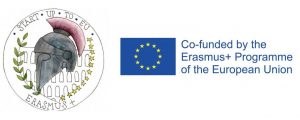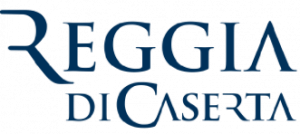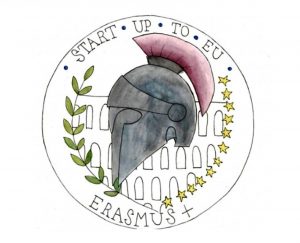
St.A.R.T.UPtoEU PARTNERS- The Schools
https://www.liceosianiaversa.edu.it

The High school “Liceo Giancarlo Siani” , today brilliantly directed by Mrs Rosaria Barone, was founded in 2008 in Aversa where it occupies a two-storey building surrounded by a large courtyard / garden All classrooms are spacious, welcoming and equipped with an IWB connected to a PC to enhance innovative and inclusive teaching. The science, physics, IT, linguistic laboratories are all equipped with the most efficient technology and tools. Meetings and public events are held in a large hall also used to show documentaries and films to a greater number of students.
Phisycal Education can be taught both in the detached gym and in the courtyard equipped with sports facilities.
It has also got two branches, one in S. Arpino and a new one in Lusciano.
The courses it offers are: traditional scientific, applied sciences , robotics, meteorology and foreign languages with English, German, Spanish and French.
The costant planning skills of its staff has always ensured public regional, national and European funds thanks to which the school can
- offer a large range of extra-curricular activities aiming at language certification achievement, the students’ participation in varied competitions (both in sports and literary or scientific fields) or in FAI (Italian Environment Fund) days as apprentice tourist guides (These are just a a few of the numerous other initiatives the school has fulfilled and always will).
- rely on infrastructures and equipments to update its classrooms , labs and teaching technologies
- allow its students to take part in abroad study trips to improve foreign language learning
- strengthen basic skills and talented students , but also enhance excellent ones
- experiment school-work turnover programs
- ensure the students’ success and their life –long learning to avoid the drop out phenomenon, which has always been the mission of our school.

The Europaschule Langerwehe is situated in the Rhineland right on the edge of the volcanic Eifel, a nature reserve in North Rhine Westfalia. Around 1200 students attend our school and 120 teachers, social workers and special needs teachers work here.
Students from grade five to 13 attend the Europschule and graduate after grade ten, to start on-the-job-training, or after grade 13 with the Abitur in order to go to university. That means our students are aged 10 to 19. Our students’ backgrounds and learning abilities are very heterogenic and we also practice the inclusion of students with special needs.
The Europaschule offers a wide variety of possibilities for learning as we hold certificates for Sports and Health, Science (MINT), bilingual courses (English) and of course the European certificate “Europaschule”, which indicates a lot of activities concerning Europe, like Erasmus+ projects, activities concerning the whole school on Erasmus Day, language assistants and much more. Students can learn French, Latin and Spanish besides English.
The school life is enriched by extracurricular activities, class field trips, theatres and musicals, science projects and the like.
As of 2021 our school, being a model project for digitalization in the region, has WiFi all around and grades five to eight are being equipped with tablets, as is the entire teaching staff. There are smartboards in every classroom and the new ways of digital teaching are being explored.
Visit our homepage: https://www.ge-langerwehe.de/
https://www.gvp.cz/new/

St.A.R.T.UPtoEU PARTNERS: The Organisations

Università Telematica Pegaso was established by Ministerial Decree of 20th April, 2006 (OG. no. 118, 23-5-2006- Ordinary Supplement no. 125) and provides a wide and articulated educational offer: 13 degree courses (Law, Civil Engineering, Tourism, Business Economics, Sport Sciences, Educational Sciences, Literature and Humanities, Pedagogical Sciences, Sports Management, Economics, Safety Engineering, Modern Linguistics, Philosophy and Ethics), 160 masters, 23 Specialization Courses, 77 Advanced training courses, 3 certifications, 9 academies.
Pegaso is chosen by over 100.000 people and is built on the most modern and performing technological e-learning standards, with a wide, diversified and professionalizing range of educational offers both in the national and international panorama of higher education.
The University is able to reach the student at any moment, anywhere, thanks to the web-oriented approach. In order to be in the classroom all students need is a screen (laptop, tablet, even smartphone) and an Internet connection: from anywhere in the world just enter the platform credentials to have immediate access to the text of the lesson, with bibliographic references and notes, slides, video-lessons and self-evaluation tests enriched with tables, charts and graphs, all audio-commented by the most prestigious lecturers.
The strength of Pegaso is its network which boasts more than 90 exam centers throughout Italy, located in prestigious buildings that belong to the immense historical heritage of Italy. In addition, Pegaso counts with more than 750 ECPs (E-learning Center Points), educational centers in which qualified people are ready to provide information, support for registration and educational tutoring services useful to conclude the study course.
As member of important university networks, such as UNIMED, EUCEN, EMUNI and EDEN, Pegaso considers the internationalization process as one of the fundamental cornerstones for its cultural, scientific and technological development. To such purpose, the University has signed around 70 agreements with international universities for common scientific projects, exchange of materials and publications, exchange of teachers, researchers and students, organization of conferences, seminars and cultural initiatives.
https://reggiadicaserta.cultura.gov.it/

The Reggia di Caserta was commissioned by King Charles of Bourbon to the architect Luigi Vanvitelli in 1751. The Palace covers an area of approximately 61,000 m². Furthermore, with its 123 hectares of Royal Park, 3 km of Via d’Acqua and over 200 botanical species in the English Garden, it is one of the largest and most prestigious royal residences in the world, a perfect synthesis of architecture, painting, sculpture, decorative arts and nature.
The far-sighted vision of King Charles included not only the construction of the Royal Palace of Caserta, but also the development of the city and the surrounding area, as evidenced by the construction of the Caroline Aqueduct designed to supply the pools and fountains of the Royal Park, the city of Caserta and the village of San Leucio.
The birth in the territory of productive realities such as the silk factories of San Leucio and the farm of Carditello testifies to the attention paid by the Bourbons to the potential of the territory.
Even today the Reggia di Caserta is configured as an engine of development for the local community and in 1997 it was declared a World Heritage Site by UNESCO, together with the Carolino Aqueduct and the San Leucio Belvedere.
Among the most important Italian state museums, since 2014 the Ministry of Culture has given it scientific, financial and organizational autonomy. The Palace and the Gardens develop along a single and harmonious perspective axis – called Cannocchiale – consisting of the entrance gallery and the waterway up to the waterfall, scenically placed at the peak of the perspective escape thus created. The Grand Staircase, an invention of eighteenth-century scenographic art, connects the lower and upper vestibule, which leads to the Palatine Chapel, inaugurated on Christmas 1784, and to the Royal Apartments.
The rooms for the royal family were built on several occasions and over an entire century. Today the Museum of the Royal Apartments extends only along the southern elevation and the tour is divided into an eighteenth-century apartment and a nineteenth-century apartment.
The Royal Park, an integral part of the project presented by the architect Luigi Vanvitelli to the sovereigns, is inspired by the gardens of the great European residences of the time, blending the Italian tradition of the Renaissance garden with the solutions introduced by André Le Nôtre in Versailles.
The formal or Italian garden, as it is seen today, is only partly the realization of what Luigi Vanvitelli had conceived and after his death, in 1773, the works were completed by his son Carlo who, while simplifying the paternal project , preserved the compositional rhythm with the alternation of fountains, water basins, meadows and waterfalls.
At the end of 1700, with the arrival of new fashions from Europe, the English Garden was created, a romantic or landscape garden inspired by a “spontaneous” conception of Nature, free from the formalisms and compositional regularity of the Italian Garden.
Other partners




